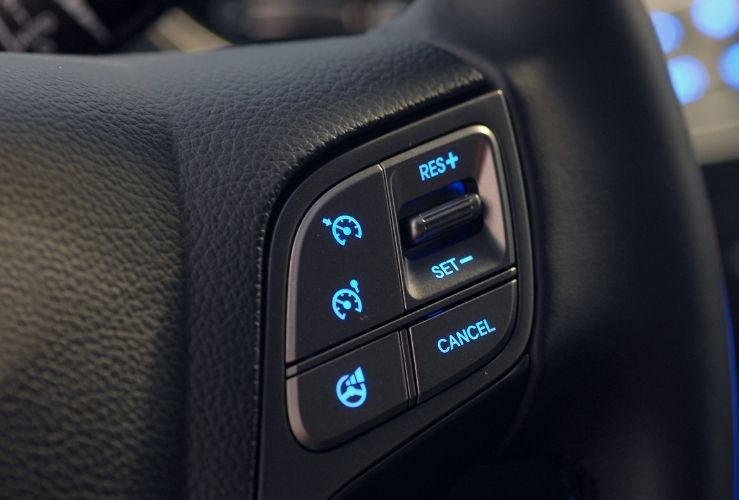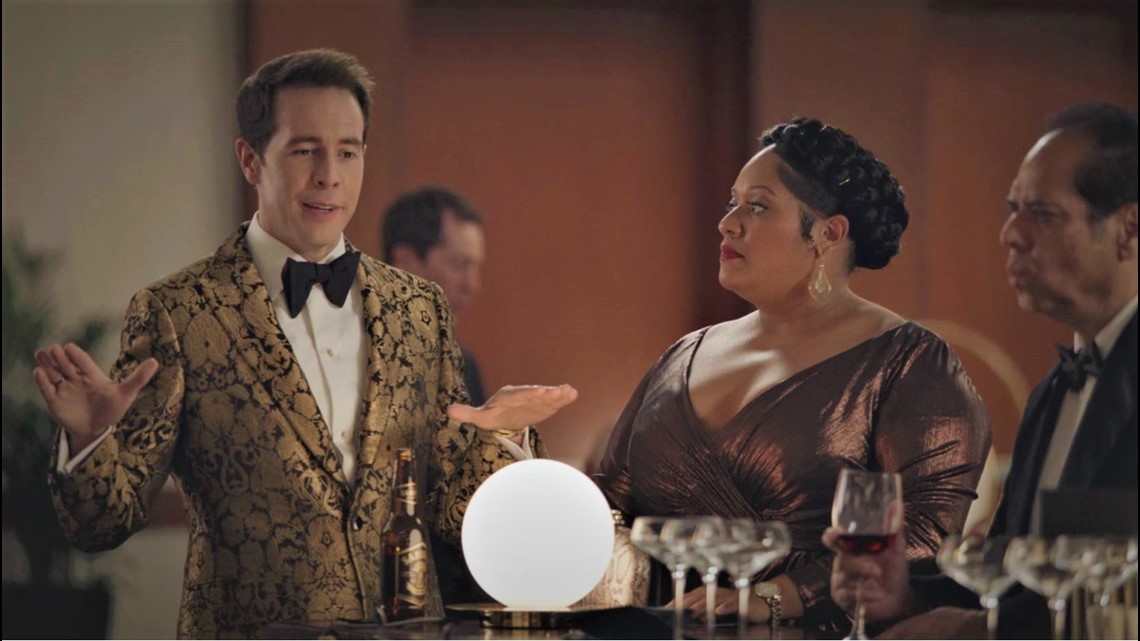Table Of Content

Once you are ready for Super Cruise to steer again, center the vehicle in the lane and wait for the steering wheel to turn green. All Super Cruise-equipped vehicles include 3 years of connectivity to support functionality, after which an eligible paid Super Cruise OnStar service plan is required. Lane-CenteringSuper Cruise vehicles are equipped with a series of cameras and sensors that identify lane markings to keep you centered in your lane while driving hands-free. More than 200,000 miles of Compatible Roads†Available in the U.S. and Canada.
Get Car Support Solve Any Problem
In addition, in the Bolt EUV, Super Cruise does not move to one side of the lane when passing traffic. Super Cruise will use the Adaptive Cruise Control† set speed, however if you have not set the Adaptive Cruise Control speed when Super Cruise is activated, it will use your current speed as the Adaptive Cruise Control set speed. To disengage Super Cruise, take control of the steering wheel and then press the Super Cruise button again, press the brake, or pull the Regen on Demand†. If you grab the steering wheel and press the brake pedal, Super Cruise and Adaptive Cruise Control will disengage.
What is Cruise Control and How Does it Function in a Car?
During cruise control, the cable is not just monitoring the car’s speed but also the power of the engine. It ensures that the engine takes in the exact amount of air required to continue cruising at the set speed. With the advancement in technology, actuator systems have evolved. In many cars, the actuator is powered by a small electronically controlled vacuum valve instead of being controlled by a cable. The vacuum pressure holds the position of the throttle, allowing hands-free cruising of the car.
What Is Adaptive Cruise Control?
He focuses on safety, technology, and the environmental impact of cars. Previously, he led home and appliance coverage at Reviewed; reported on cars for USA Today, Wired, and Car & Driver; and wrote for other publications as well. Keith earned a master’s degree in public health from Tufts University. “I use the feature mostly on the freeway and in stop-and-go traffic. I find it reduces tension and fatigue,” wrote a 2020 Subaru Outback owner. “It is so nice to just set it and let the car worry about the traffic,” they told CR.
For example, Tesla’s Enhanced Autopilot, Ford’s BlueCruise, the Mercedes Drive Pilot, and General Motors’ Super Cruise bring the potential for Level 3. A few over-the-air software tweaks will turn the potential into reality. However, like a stood-up date who is all dressed up with nowhere to go, you will not find Level 3-designated highways as of yet. Automotive engineers tweaked around the edges of cruise control for the next 35 years. However, cruise control didn’t evolve much beyond the first system that found its way into the 1958 Chrysler Imperial.
28 Top Self-Driving Car Companies to Know - Built In
28 Top Self-Driving Car Companies to Know.
Posted: Mon, 01 Apr 2024 23:45:09 GMT [source]
Understanding Cruise Control
Now, if conventional cruise control is your old reliable friend, then Adaptive Cruise Control (ACC) is like that friend's tech-savvy younger cousin. ACC isn't just maintaining your set speed, it's also keeping an eye on the car in front of you. If that car slows down, ACC slows your car down to keep a safe distance. Level 2 – To qualify as Level 2, a vehicle must have at least two driver-assistance technologies. This typically includes ACC and another technology like lane-centering assist or lane-keeping assist.
While fully autonomous vehicles are still in the developmental stages, the integration of cruise control technology is a big step toward creating safer and more efficient transportation systems. Moreover, the more sophisticated systems with full stop and start or a low-speed traffic-jam feature work great for city driving. Typically, ACC gets included in a trim level or some sort of optional driver-assistance package on new cars. Early systems didn’t allow for presetting the maintained following distance.
However, it is important to note that cruise control shouldn't be used in certain conditions, such as heavy traffic or slippery roads. Predictive Cruise Control is like the fortune teller of cruise control systems. It uses GPS and map data to see into the future and predict what's coming up on the road, like hills or curves, and adjusts your speed accordingly.

Like BlueCruise, Super Cruise relies on a driver-facing camera to ensure you're paying attention while it's active. It will also allow you to drive without any hands on the wheel. Check out the below video from our sister site Autotrader that explains what you need to know about adaptive cruise control.
Each individual has their own tendency of where they drive in a lane, and where they perceive the center of the lane to be. Because we do not sit in the center of the vehicle, this can vary from driver to driver, and also depends on what type of vehicle is being driven based on how wide or tall the vehicle is. Super Cruise is designed to drive in the true center of the lane (+/- 4 inches or 10 cm). This may be different from where each individual normally drives and may give some drivers the feeling that they are too far to one side.
The steering wheel has a force sensor that can tell if your hand's on the wheel, and if it's absent for too long, Autopilot will alert the driver to reengage and eventually stop the car if that doesn't happen. There is no other driver-monitoring tech, particularly no cameras that monitor the driver's eyes. There is a driver-facing camera inside all Teslas, but the company currently does not use it for this purpose. Cruise control offers several benefits to drivers, especially during long road trips or highway driving. Keith Barry has been an auto reporter at Consumer Reports since 2018.
Super Cruise allows the driver to drive hands-free when compatible road driving conditions allow the feature to be available; but the driver still needs to pay close attention to the road. Even while using the Super Cruise driver assistance technology, drivers should always pay attention while driving and not use a hand-held device. Comparison of active safety/driver assistance feature availability does not include the relative effectiveness nor functionality of the compared features.
Some systems also feature forward collision warning systems, which warn the driver if a vehicle in front—given the speed of both vehicles—gets too close within the preset headway or braking distance. All cruise control systems must have the capability to be turned off explicitly and automatically when the driver depresses the brake pedal and often also the clutch. Cruise control systems frequently include a memory feature to resume the set speed after braking and a coast feature to reduce the set speed without braking. When the cruise control is engaged, the throttle can still accelerate the car, but once the pedal is released, it will slow down the vehicle until it reaches the previously set speed. Cruise control technology plays a vital role in the development of autonomous vehicles, or self-driving cars.
OnStar® Emergency Service & Assistance†An OnStar Emergency-Certified Advisor† can assist drivers should they become non-responsive while Super Cruise is active. Close this window to stay here or choose another country to see vehicles and services specific to your location. Starting as a feature exclusive to Cadillac, Super Cruise is now offered on the Chevrolet Bolt EUV, though it's not the advanced Super Cruise system with lane-change functionality. As for Caddy, it's currently available on the CT4 and CT5 sedans, as well as the Escalade. BlueCruise will use a driver-facing camera to make sure you're paying attention while the system is operating. It will also let you drive completely hands free while it's activated.
The throttle valve controls the power and speed of the engine by limiting how much air the engine takes in (see How Fuel Injection Systems Work for more details). However, drivers should remain attentive and ready to take control of the car at any moment. It’s also important to note that cruise control should not be used in hazardous weather or road conditions. When cruise control is activated, the driver sets a desired speed for the car to maintain. The car’s engine and transmission work together to maintain that speed without any input from the driver. In 2017, Cruise was conducting testing on public roads with Cruise AVs in San Francisco, Scottsdale, Arizona, and the metropolitan Detroit area.
It allows cars to talk to each other, coordinating their speeds to maintain a safe distance. It's like having a well-coordinated team of cars all working together to make the traffic flow smoother and reduce congestion. Picture it like a synchronized dance on the highway, where every car knows its place and keeps the right distance.

No comments:
Post a Comment